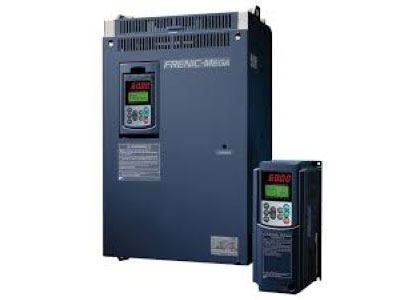Key Takeaway
A Variable Frequency Drive (VFD) has three main parts: the rectifier, the DC link, and the inverter. The rectifier converts incoming AC power to DC power. This DC power is then stored and filtered in the DC link, which maintains a steady voltage. Finally, the inverter converts the DC power back to AC power with variable frequency and voltage. This allows for precise control of motor speed and torque, ensuring efficient and flexible operation. These components work together seamlessly to optimize motor performance.
Key Components of VFDs
VFDs consist of several critical components, each playing a specific role in converting and controlling power. The main parts include the rectifier section, DC bus, inverter section, and control interface. These components work together seamlessly to adjust motor speed and ensure efficient operation. For a newly joined engineer, grasping these elements is fundamental to mastering VFD functionality.

The Role of the Rectifier Section
The rectifier section is crucial in a Variable Frequency Drive (VFD). It converts incoming AC power to DC power, laying the groundwork for efficient motor control. This section typically uses diodes or thyristors to manage the power flow. By converting AC to DC, the rectifier establishes the foundation for the DC bus.
Understanding the rectifier’s function is essential. It helps diagnose power conversion issues and ensures the VFD operates efficiently. Imagine the rectifier as a gateway, transforming variable AC power into a stable DC output. This stability is vital for the next stages in the VFD.
Why is this important? A malfunctioning rectifier can lead to significant power issues, affecting the entire VFD system. Regular maintenance and troubleshooting of the rectifier section can prevent such problems.
You May Like to Read
Importance of the DC Bus
The DC bus is crucial in VFDs, acting as a reservoir that stores the DC power converted by the rectifier. It consists of capacitors that smooth out the DC signal, ensuring a stable power supply for the inverter section. This stability is vital for the VFD to provide consistent and reliable motor control.
Without a stable DC bus, you might experience fluctuations in motor performance. These fluctuations can cause inefficiencies, increased wear, and potential downtime. Regular maintenance and checks of the DC bus are essential to prevent such issues.
Consider the DC bus as the backbone of your VFD system. If it’s not functioning correctly, the entire system can suffer. This is why it’s imperative to monitor the capacitors and other components within the DC bus regularly. Look out for signs of wear or damage, such as leaks or bulging capacitors, and address them promptly.
Maintaining a healthy DC bus ensures your VFD operates smoothly, extends the life of your motor, and enhances overall efficiency. Regular inspections and proactive maintenance are key to avoiding costly repairs and ensuring uninterrupted operations. Keep your DC bus in top condition to keep your industrial applications running efficiently.
Functions of the Inverter Section
The inverter section is where the magic happens. It converts stable DC power back into AC power with a variable frequency and voltage, which is then supplied to the motor. This section uses power transistors, such as IGBTs, to switch the DC power on and off rapidly, creating a simulated AC waveform. By adjusting the frequency and voltage, the inverter controls the motor speed with high precision, essential for various industrial applications.
In the inverter section, precise control is paramount. IGBTs play a crucial role here. They act as switches, turning the DC power on and off at high speeds. This rapid switching generates the AC waveform needed for the motor. The ability to adjust both frequency and voltage is what allows the inverter to control motor speed accurately. This precision is vital in many industrial applications where motor speed must be finely tuned.
Moreover, the inverter’s ability to provide variable frequency and voltage helps in optimizing energy consumption and enhancing motor performance. For industries, this means improved efficiency and reduced operational costs. The inverter section’s design and functionality are integral to achieving these benefits, making it a critical component in modern motor control systems.
Understanding this process is key to leveraging the full potential of inverters in your operations. Whether it’s for improving efficiency, cutting costs, or ensuring precise motor control, the inverter section is indispensable in industrial applications.
Control and Interface Components
Control and interface components are vital for the functionality and flexibility of Variable Frequency Drives (VFDs). They include essential elements like microcontrollers, sensors, and communication interfaces, each playing a crucial role in monitoring and adjusting the VFD’s performance.
These components are the brains of the VFD, enabling precise control and customization. Microcontrollers act as the central processing units, executing programmed instructions to control motor speed and torque. Sensors provide real-time feedback on parameters such as current, voltage, and temperature, ensuring optimal operation and protection against faults. Communication interfaces, such as Ethernet or Modbus, allow the VFD to communicate with other control systems, facilitating integration into larger automation networks.
Understanding these elements is crucial for engineers. It allows for seamless programming of the VFD, setting precise operational parameters, and troubleshooting issues effectively. By mastering these components, engineers can ensure that the VFD operates efficiently, adapts to specific application needs, and integrates smoothly with existing systems. This knowledge also aids in optimizing performance, enhancing reliability, and extending the lifespan of the VFD.
Conclusion
Identifying and understanding the main parts of a VFD is crucial for anyone involved in industrial applications. The rectifier section, DC bus, inverter section, and control interface each play a pivotal role in the VFD’s operation. By mastering these components, engineers can ensure efficient motor control, troubleshoot effectively, and contribute to the smooth operation of industrial systems. This knowledge is a foundational step in becoming proficient in VFD technology and its applications.
